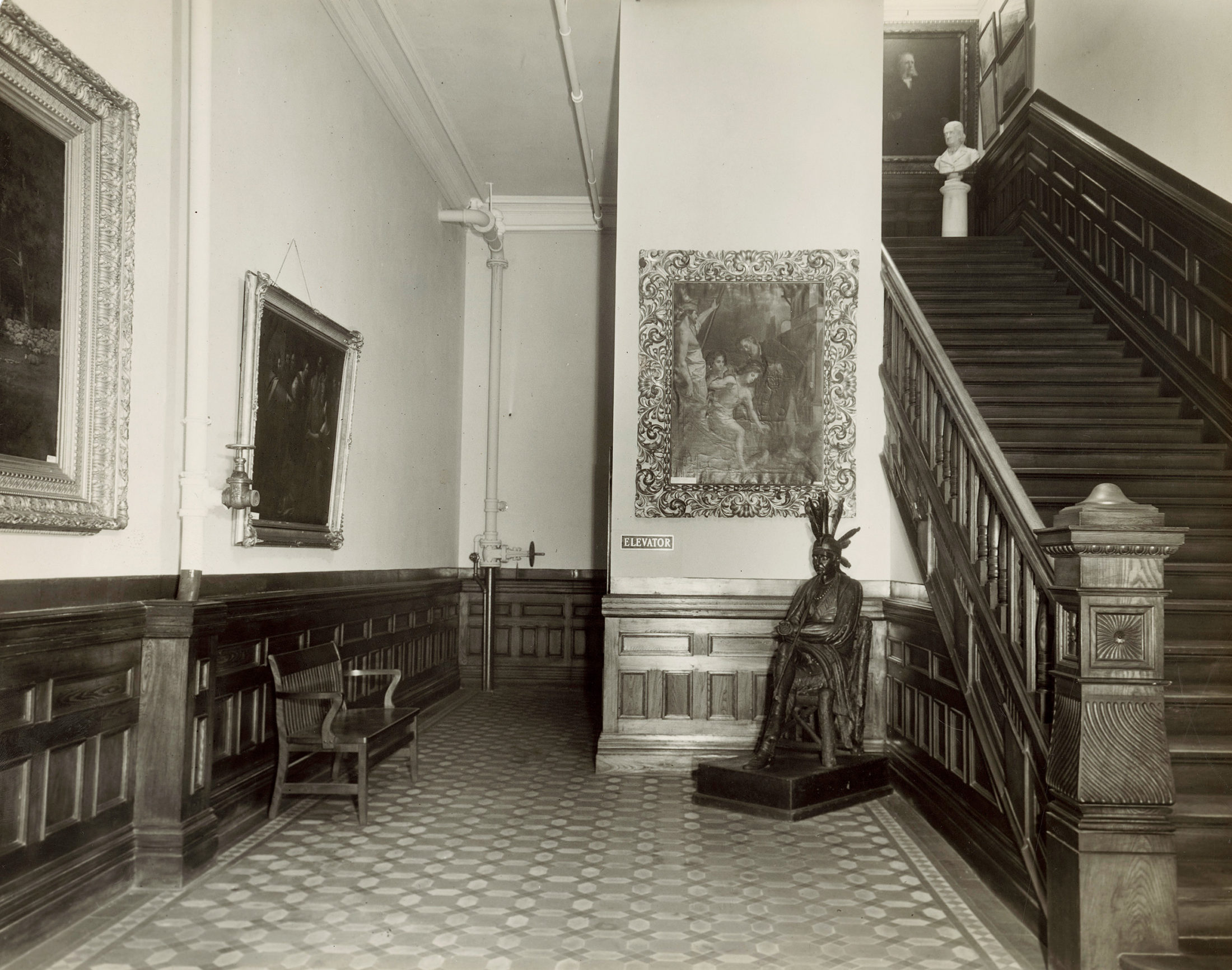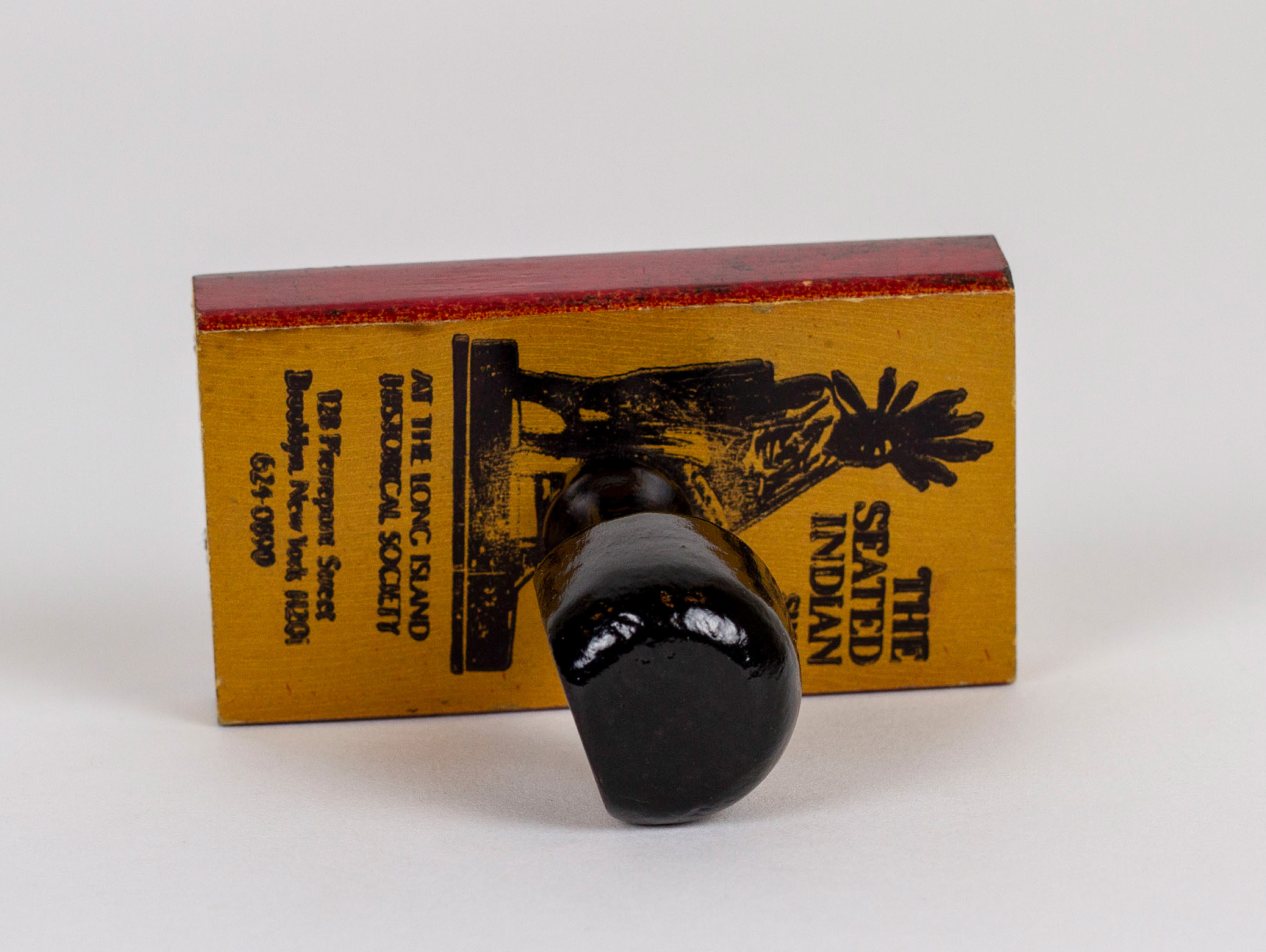The Myth of “Simpler Times”
Coming to Grips with Difficult Histories
Long Island Historical Society (now Brooklyn Historical Society) became home to the Montague Street show figure in 1930, when local residents—anxious about the city’s rapid growth—decided it needed to be preserved as a symbol of a “simpler time” in Brooklyn. For years, the show figure was displayed prominently in the society’s main lobby and occasionally used in museum displays about local American Indian life.

Interior view of the Tile Lobby inside the Long Island Historical Society, after 1930
Ernest Tanare
V1974.031.62
Brooklyn Historical Society
The show figure eventually became synonymous with LIHS’s public identity. It was featured on institutional branding, and in the 1980s, the museum’s store was even named “the Seated Indian Gift Shop.” Looking back, the insensitivity of these early decisions is plain, missteps perpetuated by the complexity of this historical artifact. It is a beautifully carved piece of American folk art. It was an advertising tool from 1862 to 1930 when it was on display in Montague Street. It was also an agent of oppression.

Marking Stamp, before 1985
M1997.23.1
Brooklyn Historical Society
This sculpture perpetuated racist stereotypes of “noble savages” and concealed the violence and injustices that had been wrought upon American Indian communities from the 1600s to the present. By acknowledging this final truth, BHS also preserves the legacy of the Lenape communities who called New York home for centuries and whose descendants today still live throughout the United States and Canada.